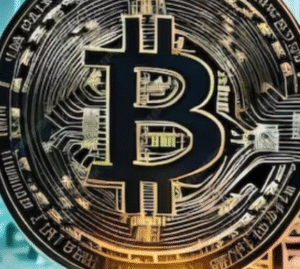$GOOGL $MSFT $BTC
#AI #MachineLearning #MonetaryPolicy #Finance #Economy #CentralBanks #TechnologicalInnovation #FinTech #Crypto #AlgorithmicTrading #Automation #FutureOfWork
Technological advancements have made significant inroads into various sectors, and the financial world is no exception. The question of whether robots and artificial intelligence (AI) can replace humans in devising and implementing monetary policy—a cornerstone of economic stability—has garnered increasing attention. While the short answer remains “no,” given the complexity and political nature of monetary decisions, there’s no denying that machines are making tangible progress in assisting policymakers. Algorithms and machine learning models are adept at processing vast datasets far more efficiently than humans. These tools are helping economists and central banks identify trends, assess risks, and model potential outcomes more accurately, saving valuable time while offering insights that might otherwise go undetected. However, current AI systems lack the nuanced judgment and understanding of socio-political dynamics that human policymakers bring to the table. As it stands, AI enhances the decision-making process rather than replacing the decision-makers.
There are growing investments in technology-based solutions for economic and financial decision-making. Companies like Alphabet ($GOOGL) and Microsoft ($MSFT) are actively developing advanced AI systems that assist in analytics and predictive modeling. In the crypto space, blockchain algorithms like those underpinning $BTC continue to demonstrate how decentralized decision-making models can challenge traditional entities. Such developments could influence how monetary policy evolves in the years to come. For instance, predictive analytics, driven by machine learning models, is increasingly being used to forecast economic indicators like inflation, employment, and market liquidity. These forecasts allow central banks to act preemptively, potentially mitigating risks such as financial crises. Nonetheless, AI’s potential to cause disruptions in financial markets, via algorithmic trading or flash crashes, highlights the importance of human oversight. Poorly designed or misaligned models can lead to unintended consequences, reinforcing the need for a balanced integration of AI technologies in policy formulation.
Another area where AI is proving valuable is in the real-time analysis of high-frequency market data. With technology giants continually investing in enhanced processing power and data analytics, computers can now monitor and react to market events in ways humans cannot, leading to more efficient markets. However, this efficiency also raises new challenges for central banks as they attempt to maintain financial stability. For example, the Federal Reserve and European Central Bank are exploring digital currencies that utilize blockchain and AI technology as a way to modernize monetary systems. While the technology offers unparalleled speed and transparency, central banks must contend with questions surrounding its impact on traditional monetary tools like interest rate adjustments or open market operations. Such transformative developments point to a future where human policymakers and machine agents collaboratively steer monetary policy instead of working in isolation.
Ultimately, while replacing human judgment in monetary policy is unlikely in the foreseeable future, the role of machines continues to grow in influence and relevance. Emerging technologies are fostering a hybrid model where AI lends its computational power to complement human expertise. The benefits include improved forecasting, increased precision, and the ability to act swiftly in volatile market conditions. Yet, the risks of technical failures, data biases, or unintended socioeconomic consequences highlight the need for cautious implementation. More broadly, the adoption of AI in economic policymaking has far-reaching implications for global markets, underscoring the need for continuous regulatory oversight and ethical considerations. As technology continues to evolve, the partnership between humans and machines will likely dictate the success of future monetary strategies, reshaping how central banks operate in an increasingly automated world.











Comments are closed.